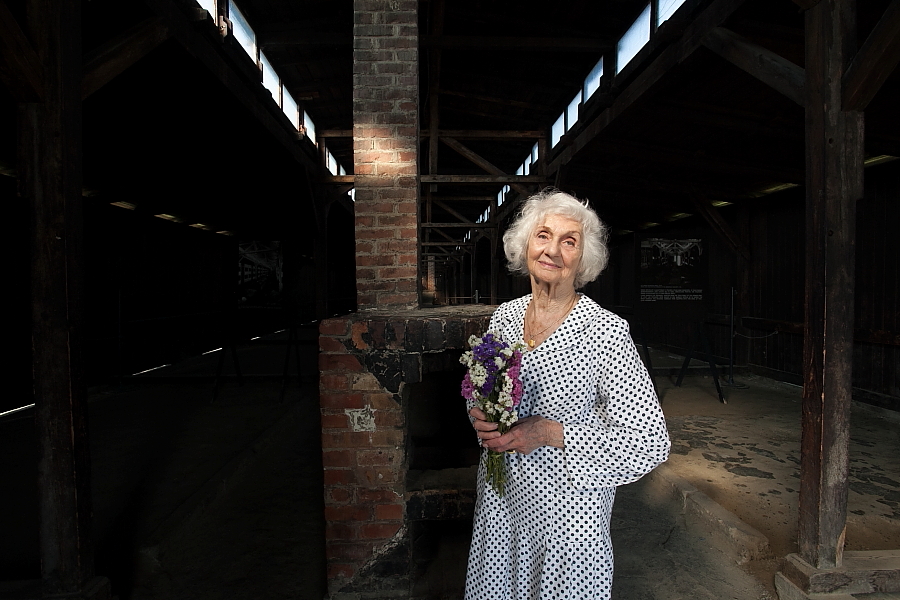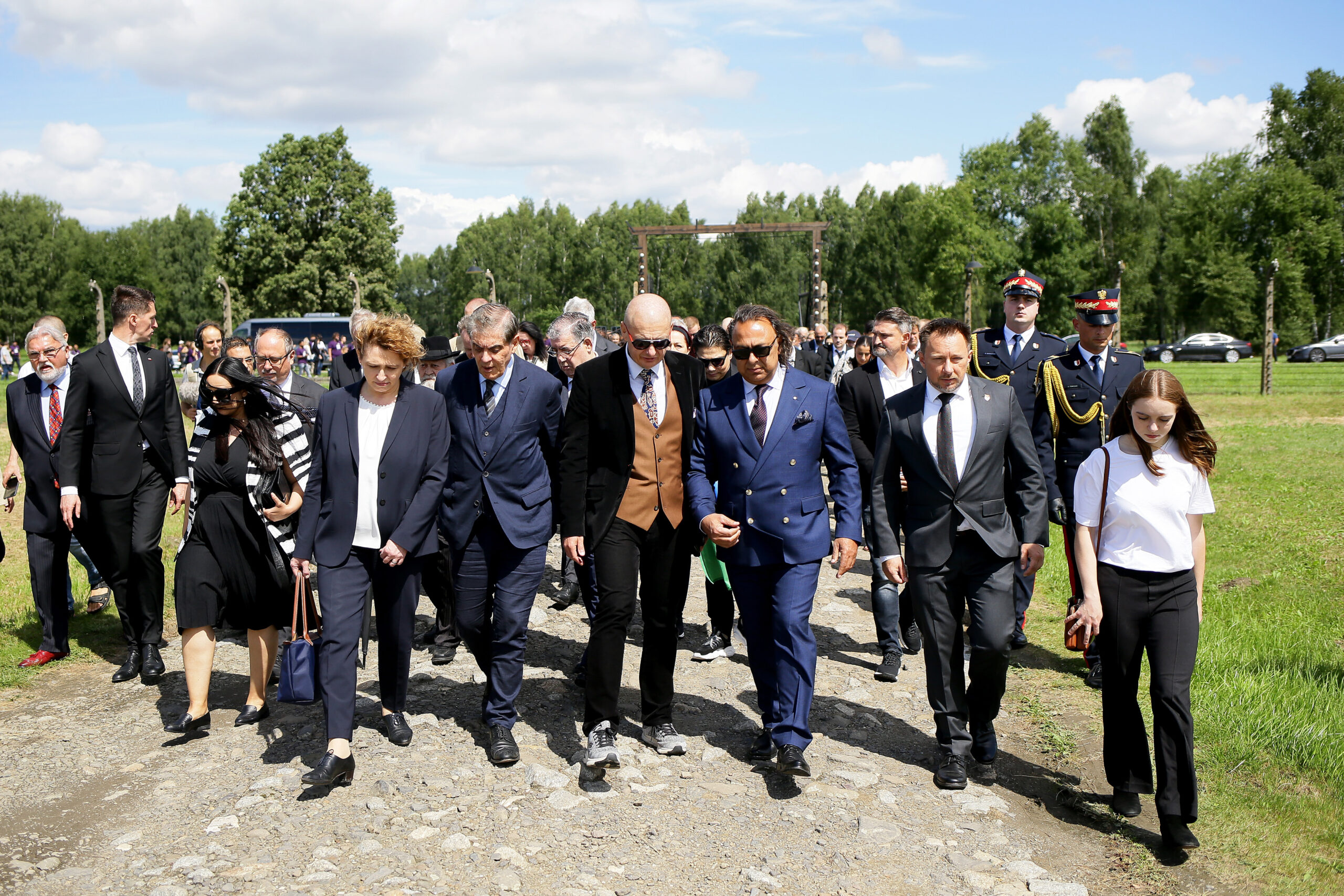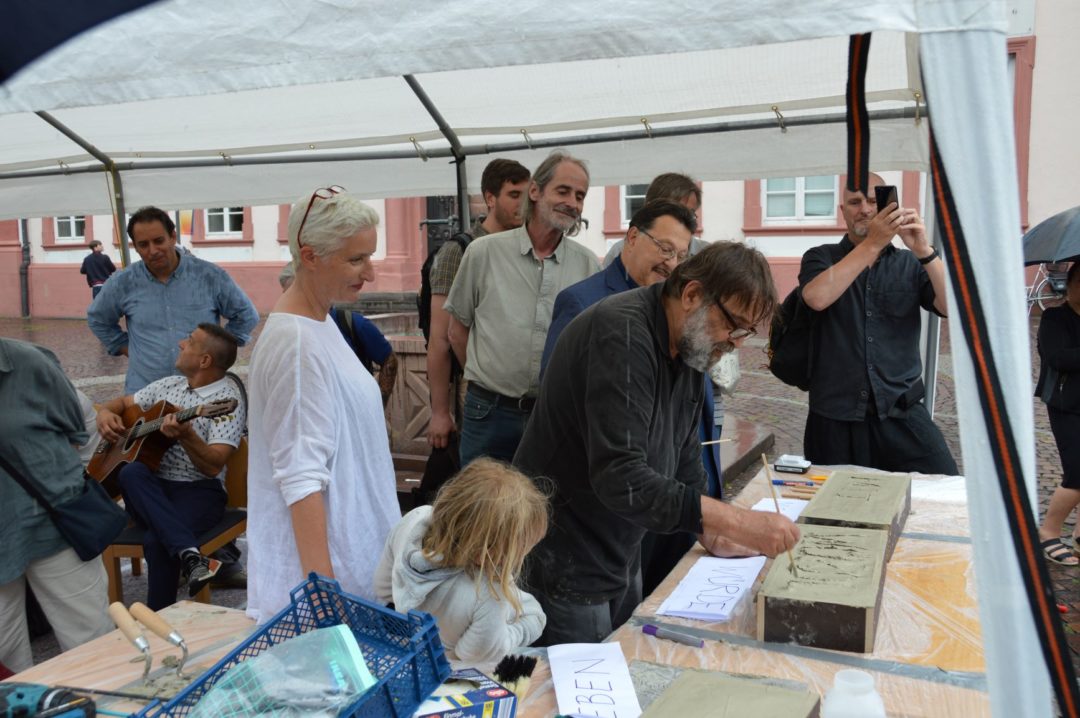
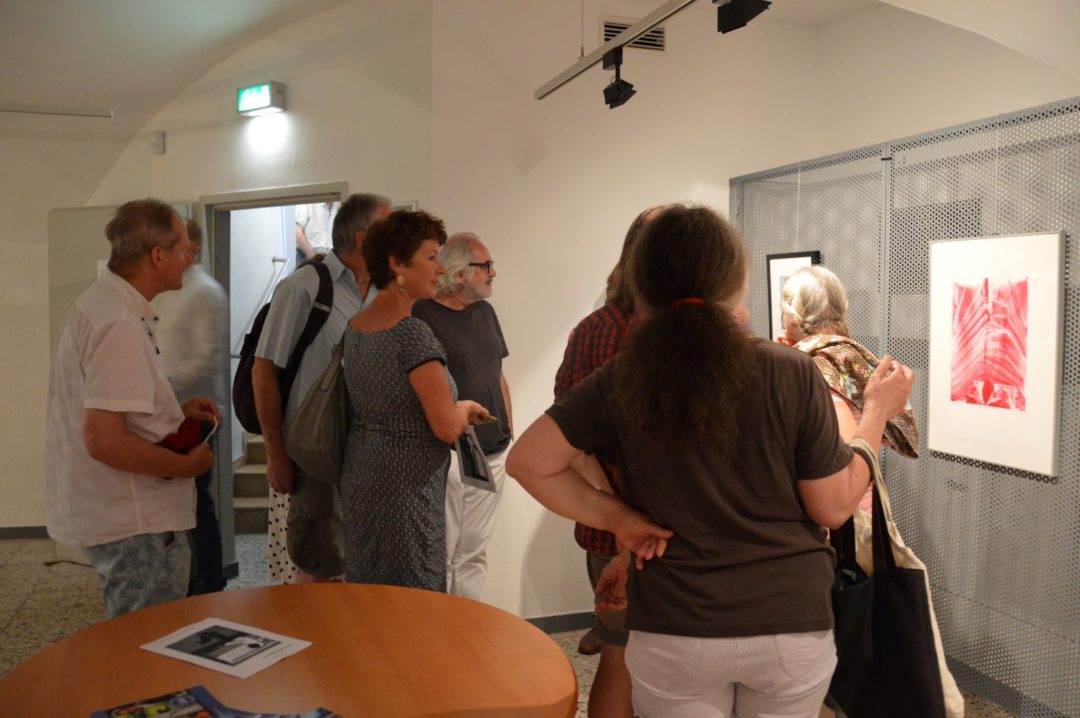
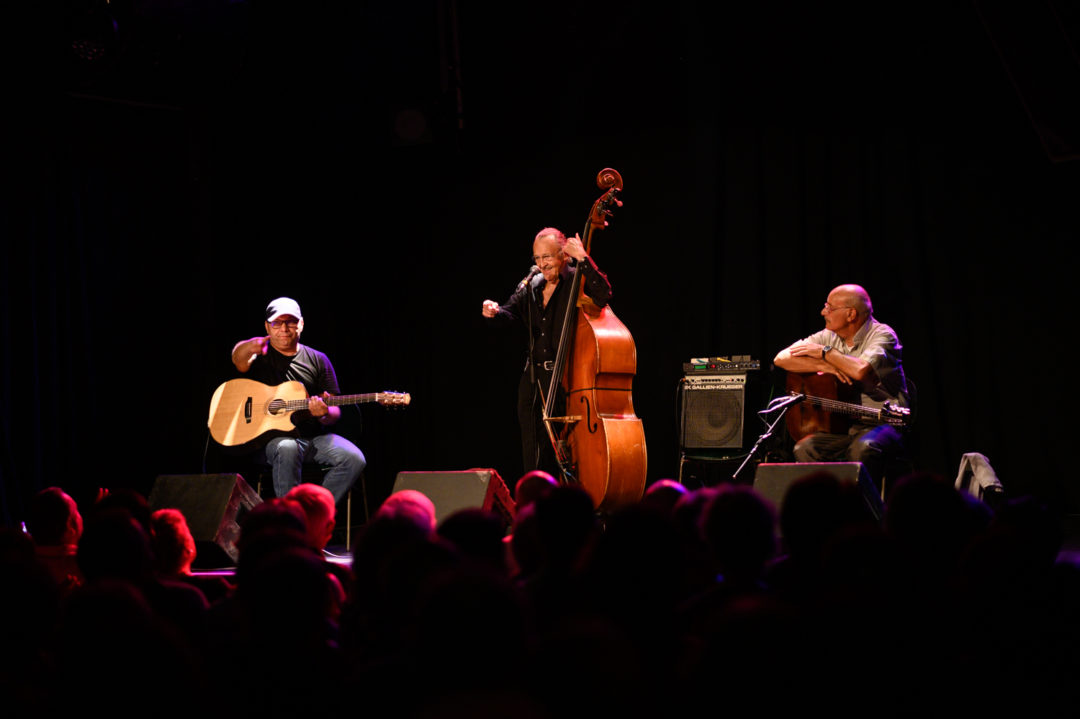
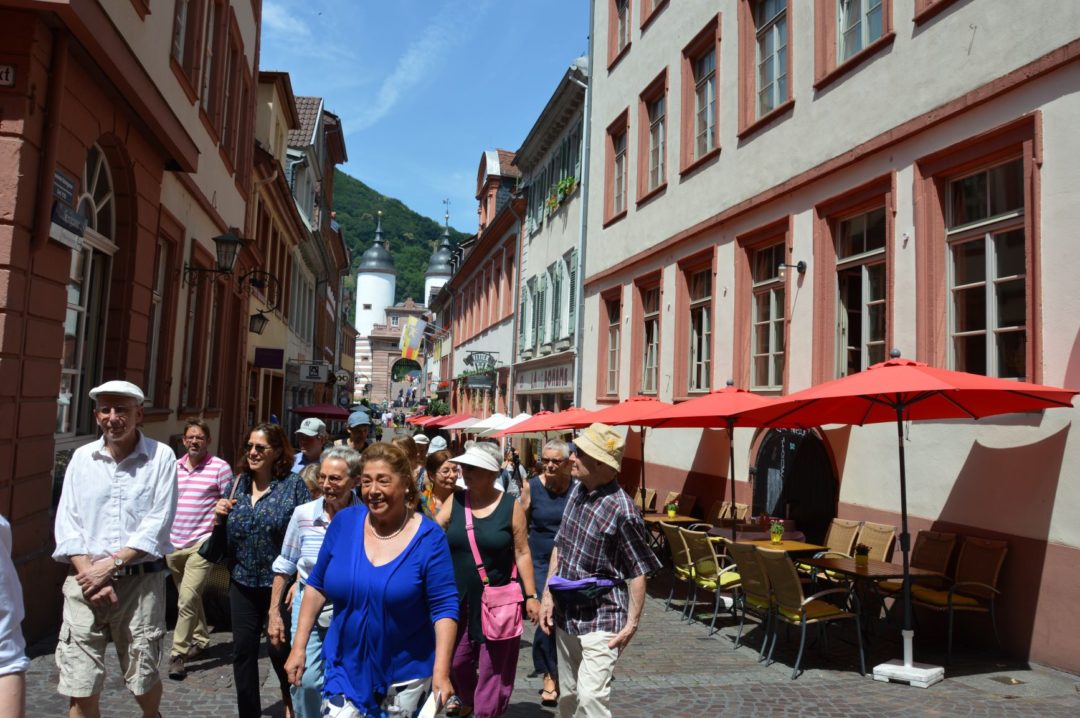

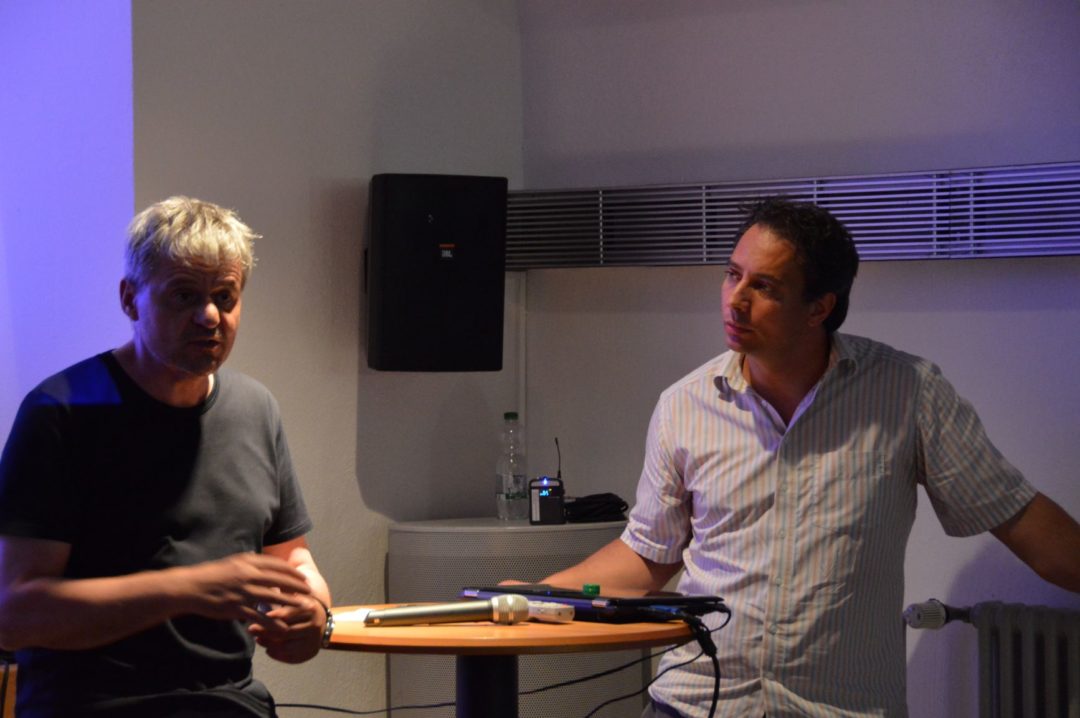
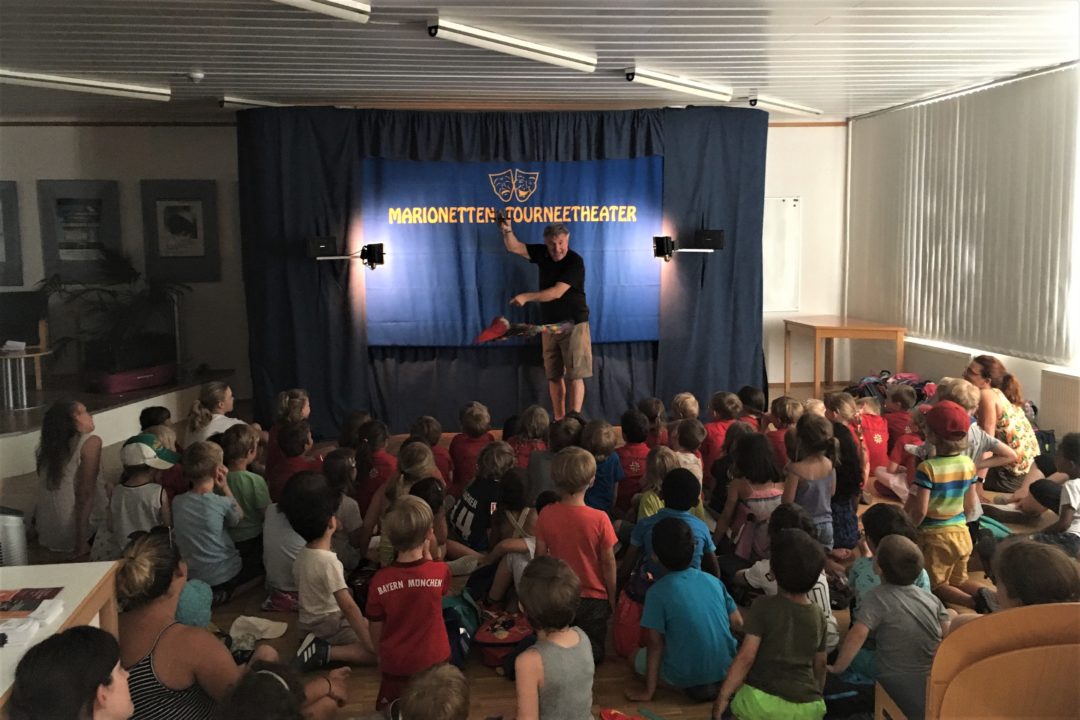

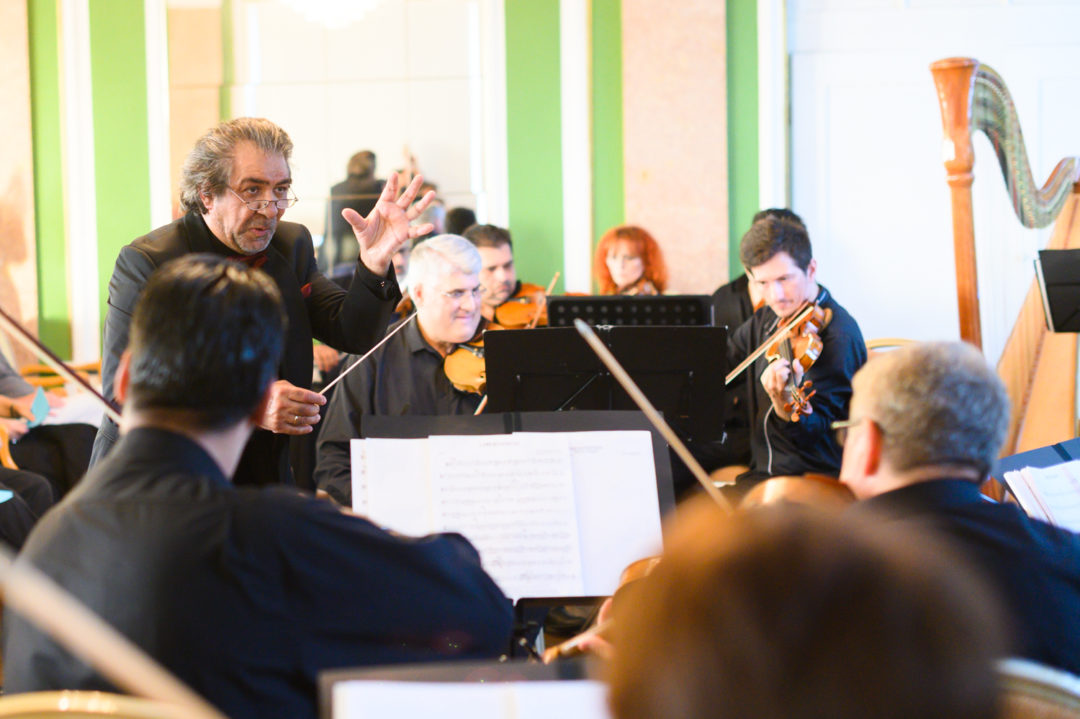
‘Living with dignity’ – these three words were carved by the artist Alfred Ullrich, the deputy chairman of the Central Council of German Sinti and Roma, Jacques Delfeld, and Andrea Edel, head of the Cultural Office of the City of Heidelberg, into the still liquid concrete, which Alfred Ullrich had previously mixed and filled into three wooden molds, at the start of the Cultural Days on June 22 at the University Square. The art performance was held under the slogan of ‘Who owns a homeland?’ and was intended to raise awareness of the fact that the Sinti and Roma, although they have been at home in Germany for more than 600 years, have had to fight for the right to a homeland for a long time, even in the Federal Republic of Germany, in painstaking civil rights work after the painful experiences of the Holocaust. Musically accompanied by jazz improvisations of the guitarist Luto Daniel and under the eyes of – despite the pouring rain – numerous spectators, a sign was set for a humane and diverse coexistence in our society.
At the opening of the exhibition ‘Our Homeland’ by Alfred Ullrich on June 23, the performance of the lecture was reflected upon again in a public discussion with the artist, Stefan Hohenadl (Heidelberg Cultural Office) and André Raatzsch (Documentation Center). Among other things, the discussion focused on the social dimension of art. A lively debate on the concept of ‘home’ that developed in cooperation with the audience showed that Alfred Ullrich’s works strike a chord with the current social discourse.
At the panel discussion ‘Am I German? And does it matter?’ on June 24, three young, politically committed Sinti and Roma and a Jewish student and activist discussed homeland, identity and social cohesion. Despite controversial discussions from time to time, for example on the concept of ‘majority society’, all of the panel participants promoted social openness and dialogue and emphasized the power of encounter to overcome prejudices against Sinti, Roma and Jews. Contributions from the audience led to a discussion about the extent to which one’s own experiences of exclusion and prejudice can form the basis for empathy and solidarity with these groups, even among non-members of discriminated groups. On the one hand, the difference between genocide and persecution suffered by Sinti, Roma and Jews and common stereotyped thinking, which many people encounter in one way or another, should not be relativized; on the other hand, according to the participants there is also a potential for empathetic understanding in this.
At the sold-out concert of Biréli Lagrène, Holzmanno Winterstein and Vali Mayer at the Karlstorbahnhof, which also took place on June 24, the three musicians showed the full range of their skills and knew how to inspire the audience with their joy of playing and their unmistakable sound. The Rhein-Neckar newspaper wrote in its concert review that the sounds from the three internationally recognized artists of jazz music were unconventional and the solos wild and unpredictable.
The music critic of the Rhein-Neckar newspaper was also impressed by another musical contribution of the Culture Days, the concert of the Roma and Sinti Philharmonic Orchestra on June 26 in the Hall of Mirrors of the Schlosshotel Molkenkur: he emphasized the high quality of the orchestra, which it had shown ‘from the first bars on’. The Roma and Sinti Philharmonic Orchestra under the direction of Riccardo M Sahiti played pieces by Camille Saint-Saëns, John Williams, Dimitrij Shostakovich, Astor Piazzolla, Jules Massenet, Gustav Mahler and Pablo de Sarasate and showed exemplarily where the music of the Sinti and Roma has found its way into classical music.
Also musically but completely different, Maio, Baro Dano and Imaa presented their version of hip hop at the Karlstorbahnhof on June 25. In ‘Sinti Rap’s Finest – Generation G-Funk’, the artists rapped and sang in German, English and Romany and showed that Sinti and Roma have not only influenced jazz and classical music, but have also left their mark on hip hop.
At a time when antigypsyistic stereotypes are gaining popularity in Europe, the study of the early history of the minority has a special political significance. After all, antigypsyism is based on the stigmatization of the minority as a foreign and ‘other’ group. The exhibition ‘Sinti in the Early Modern Period – Acceptance, Dissent, Cooperation’ shows how this stigmatization has been entrenched for centuries. A look at the Early Modern Period, on the other hand, also shows the connections between minority and majority that have grown and been updated time and again. The exhibition looks at a period spanning four centuries, from the arrival of the Sinti in the early 15th century to the 19th century. After being shown at Heidelberg City Hall as part of the Cultural Days, the exhibition will be on display at the Documentation Center from July 9.
Other events included performances by the puppet theater ‚Rollende Kulisse‘, which was viewed by over 100 children from surrounding kindergartens, a historical guided tour of the city which was attended by over 40 people and lectures by Dr. Frank Reuter and André Raatzsch, who shed scientific light on antigypsyism.
A digital contribution to the Cultural Days of the Sinti and Roma was an online event available via Facebook and Youtube that provides insights into 45 years of civil rights work by the Sinti and Roma: Civil rights activists and companions remember. The video clips can still be viewed on Facebook and YouTube.
The Sinti and Roma Cultural Days were held under the patronage of the German Federal President Dr. Frank-Walter Steinmeier.
The Cultural Days were sponsored by the Baden-Württemberg Foundation and the Heidelberg Partnership for Democracy.
The next Cultural Days of the Sinti and Roma will take place in 2021.


